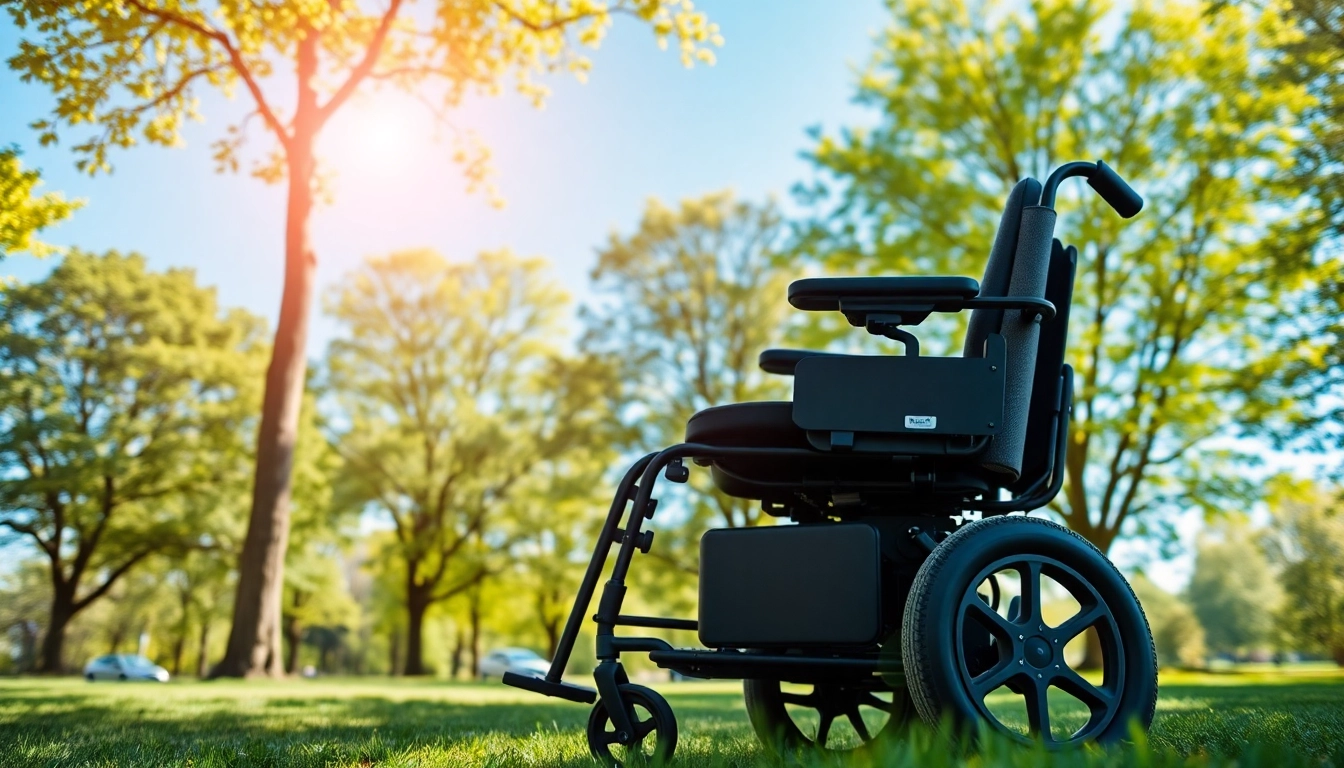
Understanding Electric Wheelchair Basics
What is an Electric Wheelchair?
An Electric Wheelchair is a mobility device designed to assist individuals with limited mobility in moving from one place to another. Unlike traditional wheelchairs that require manual effort to propel, an electric wheelchair is powered by a battery, making it easier for users to navigate various terrains and environments with minimal physical exertion. This innovation has transformed the lives of many, providing them with a sense of independence and freedom in their daily activities.
Key Components of Electric Wheelchairs
Electric wheelchairs consist of several essential components that work together to provide functionality and comfort:
- Frame: The structure that supports the entire wheelchair, typically made from lightweight materials like aluminum or titanium, contributing to both durability and ease of transport.
- Motor: The heart of the wheelchair’s power system, responsible for driving the wheels. Most electric wheelchairs feature one or two motors, depending on the design.
- Batteries: Rechargeable batteries provide the necessary power for the motor. Lithium-ion batteries are common due to their lightweight and high energy density.
- Controls: Users can operate electric wheelchairs using a joystick or other control devices, which allow for easy maneuverability and speed adjustments.
- Seat and Backrest: Designed for comfort, the seat can often be adjusted for height and recline, enhancing user experience.
Types of Electric Wheelchair
There are various types of electric wheelchairs catering to different needs:
- Standard Electric Wheelchairs: Suitable for general use, featuring basic functionalities and designed for both indoor and outdoor mobility.
- Heavy-Duty Wheelchairs: Engineered to support larger users or those needing additional strength and durability, often featuring stronger motors and frames.
- Portable or Folding Wheelchairs: Designed for easy transport, these models can be quickly collapsed for storage or travel, making them ideal for frequent trips.
- All-Terrain Wheelchairs: Equipped with rugged wheels and robust suspension systems, these wheelchairs are intended for outdoor use, capable of handling rough terrains.
- Standing Wheelchairs: Allow users to shift from a seated to a standing position, promoting health benefits by allowing for weight-bearing activity.
Benefits of Using an Electric Wheelchair
Mobility and Independence
One of the most significant benefits of using an electric wheelchair is the enhanced mobility it provides. Users can navigate environments independently without relying on caregivers or family members. This newfound freedom allows users to participate in social activities, attend appointments, and run errands more independently, fostering a sense of empowerment.
Health Advantages
Using an electric wheelchair can offer several health advantages. For individuals with physical limitations, maintaining mobility can significantly improve physical health by reducing the risk of secondary complications, such as pressure sores, muscle atrophy, and joint stiffness. Additionally, being able to move independently can also enhance mental health by promoting social interaction and reducing feelings of isolation.
Convenience and Comfort
Electric wheelchairs are designed for maximum comfort and convenience. Features such as adjustable seating, easy-to-use controls, and the ability to navigate various terrains contribute to a better user experience. Moreover, many models incorporate advanced technologies such as memory foam seating, reclining backrests, and built-in safety features, further enhancing user comfort and safety.
Choosing the Right Electric Wheelchair
Assessing Your Needs
Before selecting an electric wheelchair, it’s vital to assess individual needs. Consider factors such as the user’s weight, height, and specific health conditions. Additionally, evaluate the primary environments in which the wheelchair will be used—whether indoors, outdoors, or both—since different models are designed for various terrains. Consulting healthcare professionals can provide valuable insights into which type suits the user best.
Budget Considerations
Electric wheelchairs vary significantly in price, ranging from budget-friendly models to high-end, feature-rich options. Establishing a budget can guide the selection process. While it’s tempting to choose the cheapest option, it’s crucial to consider long-term costs, including maintenance and potential modifications, that may arise as the user’s needs change. Look for warranties and service programs to minimize future expenditures.
Features to Look For
When choosing an electric wheelchair, certain features should be prioritized based on personal needs:
- Battery Life: Choose a model with adequate battery life to support the user’s typical daily activities.
- Weight Capacity: Ensure that the chair’s weight limit exceeds the user’s weight for safety and functionality.
- Maneuverability: Consider the turning radius and ease of control, particularly in tight spaces.
- Comfort Features: Look for ergonomic seating and adjustable components to enhance comfort during extended use.
- Durability: Select a model with robust construction materials that are built to endure frequent use and various terrains.
Safety and Maintenance Tips for Electric Wheelchairs
Safety Protocols
Ensuring safety while using an electric wheelchair is paramount. Users should adhere to the following protocols:
- Regular Checks: Perform regular inspections of the chair’s components, including brakes, tires, and controls to ensure they are functioning correctly.
- Use of Seatbelts: Always wear the safety belt when using the electric wheelchair to minimize the risk of accidents.
- Avoid Slopes: Be cautious when navigating ramps or slopes, and ensure that the wheelchair is designed to handle such terrains safely.
Regular Maintenance Practices
Maintenance is crucial for the longevity and performance of an electric wheelchair. Here are some key practices:
- Cleaning: Keep the wheelchair clean by regularly wiping it down, especially the controls and wheels to prevent dirt build-up.
- Check Battery Health: Regularly assess battery performance and replace them according to the manufacturer’s recommendations.
- Tire Examination: Inspect tires for wear and tear, ensuring they are properly inflated to avoid flat tires.
Battery Care and Management
Proper battery management is essential for the performance of an electric wheelchair. Follow these best practices:
- Charging: Charge the battery fully after each use to maintain optimal performance. Avoid letting the battery completely discharge before charging.
- Storage: If not in use for an extended period, store the battery in a cool, dry place and charge it every few months to avoid deep discharging.
Resources for Electric Wheelchair Users
Where to Buy Electric Wheelchairs
Electric wheelchairs can be purchased from various sources, including specialized mobility stores, online retailers, and medical supply stores. Additionally, it may be worth exploring in-person demonstrations to test comfort and functionality before making a purchase.
Support Groups and Communities
Finding support through communities and social networks can be beneficial for electric wheelchair users. Online forums, social media groups, and local organizations provide platforms for sharing experiences, advice, and recommendations, fostering a supportive environment for individuals navigating similar challenges.
Government Assistance Programs
Many countries have programs designed to assist individuals with mobility impairments in acquiring necessary equipment, including electric wheelchairs. Researching available government programs or non-profit organizations can help users access financial assistance or resources that may facilitate obtaining a suitable wheelchair.







